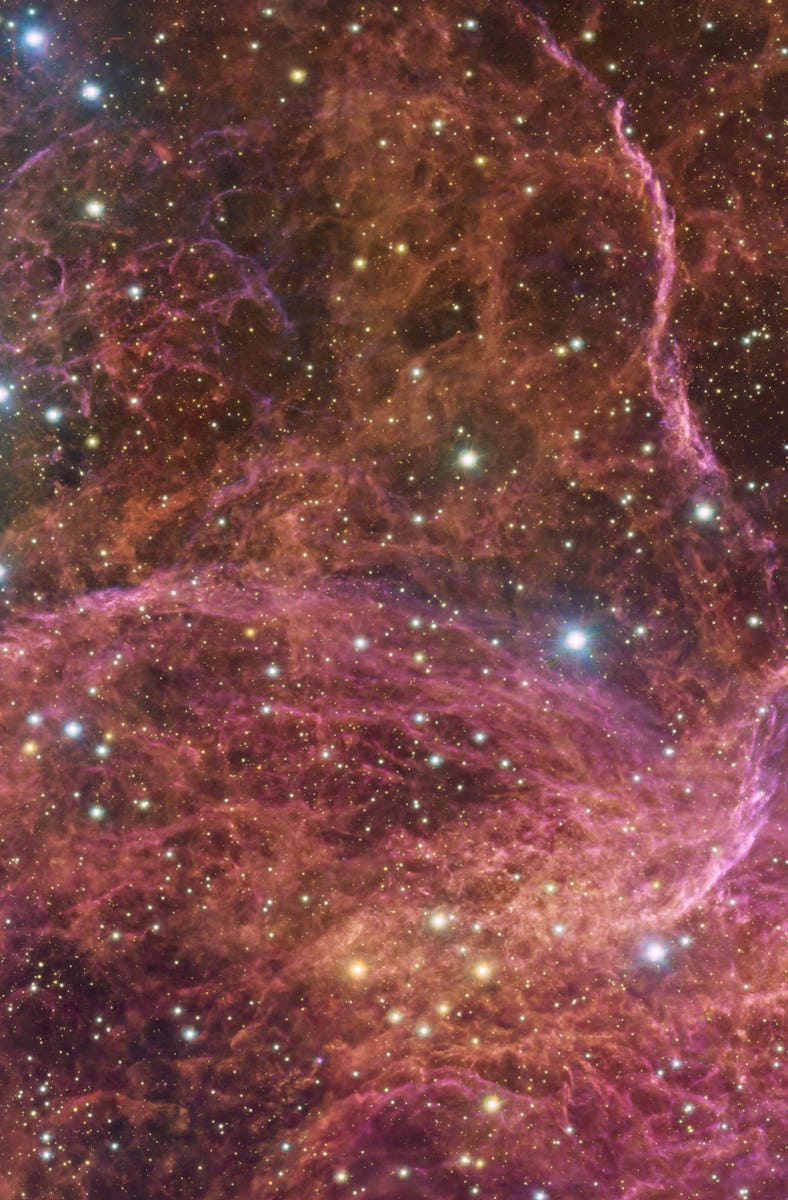Behold the Gloriously Tattered Leftovers of a Star That Went Supernova
The Vela Supernova Remnant lies in the constellation Vela in the southern night sky — and its expansive desolation is shockingly gorgeous.

This gorgeous image is the aftermath of a gargantuan, 11,000-year-old cosmic explosion known as a supernova. When the Holocene epoch was just warming up (literally) here on Earth, a massive star in the constellation Vela burned up the last of its fuel, collapsed under its own weight, and exploded with a force that’s possible to calculate but still hard to imagine.
Ancient humans living on Earth’s southern hemisphere at the time would have seen the bright glow of the supernova even in the daytime sky. This incredible visibility is due in part because a supernova is an incredibly bright explosion – often bright enough to outshine everything else in the galaxy put together – but also because this supernova exploded only 800 light years away from Earth — a stone’s thrown in galactic terms.
This is a small portion of the Vela Supernova Remnant, the aftermath of a massive star’s explosive death 11,000 years ago.
The rapidly expanding cloud of gas (which, if we could see it with our unaided eyes, would span a swath of the night sky eight times wider than the Moon) was once compressed into a single star that was several times more massive than our Sun. Fast-forward 11,000 years later, and it’s now a spreading cloud of cosmic debris — warped and sculpted by the shock waves of the supernova. Those shock waves compressed some patches of gas and ripped others to shreds, and the tattered, twining threads that make up the Vela Supernova Remnant are the tragically beautiful result.
At the heart of these trauma-wracked tatters of gas sits the star’s burned-out core: a dense ball of neutrons, whirling around ten times a second.
This particular image is a close-up of just one area of the supernova remnant, but you can view the stellar devastation in its entirety right here. The photo was taken by the European Southern Observatory’s creatively named Very Large Telescope at ESO’s Paranal Observatory, which is perched high in Chile’s Atacama Desert. This high altitude and dry air provide top-notch viewing for ground-based telescopes, allowing them to glimpse these stunning space portraits that capture the immense beauty found in the explosive chaos of the universe.